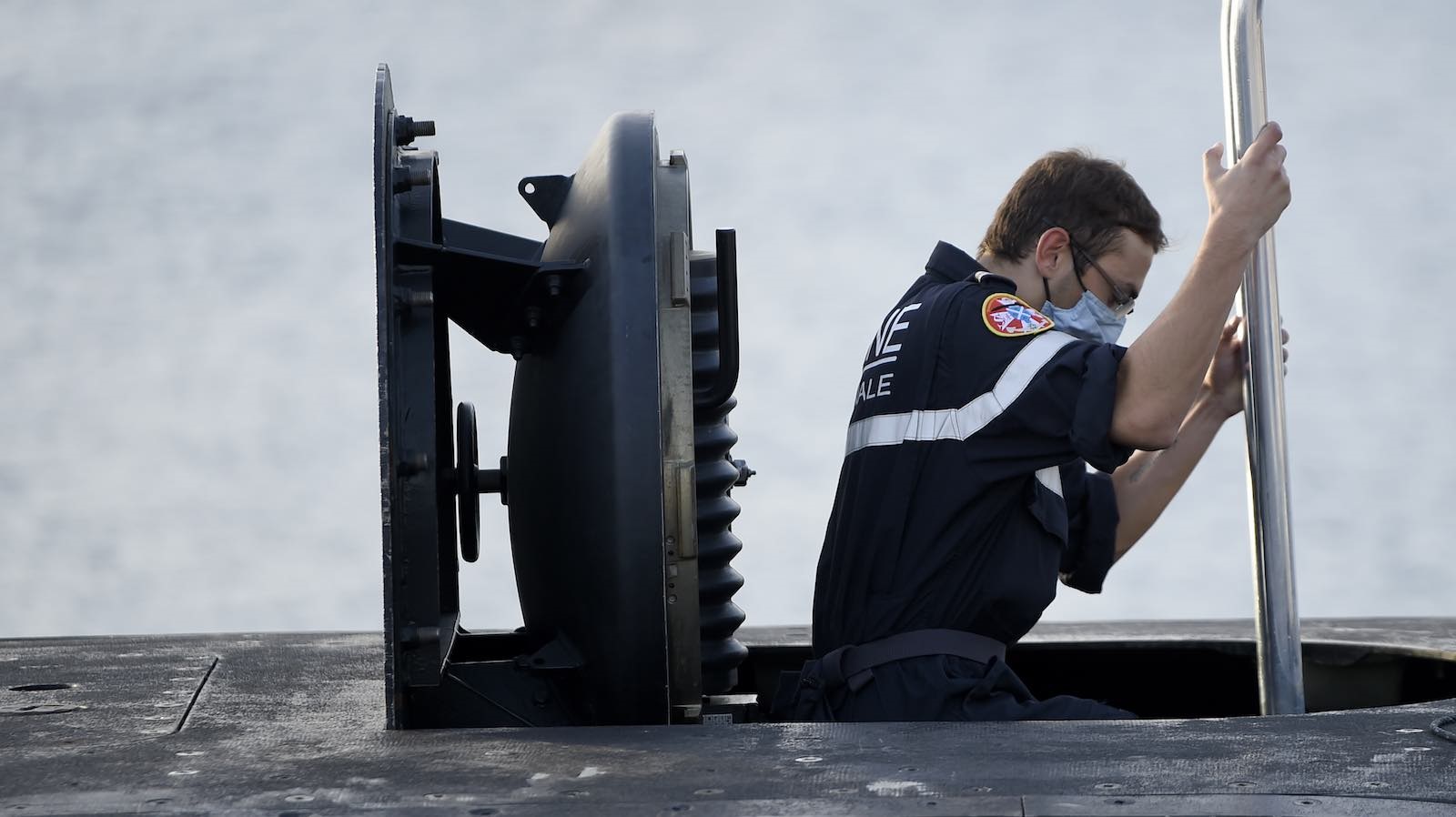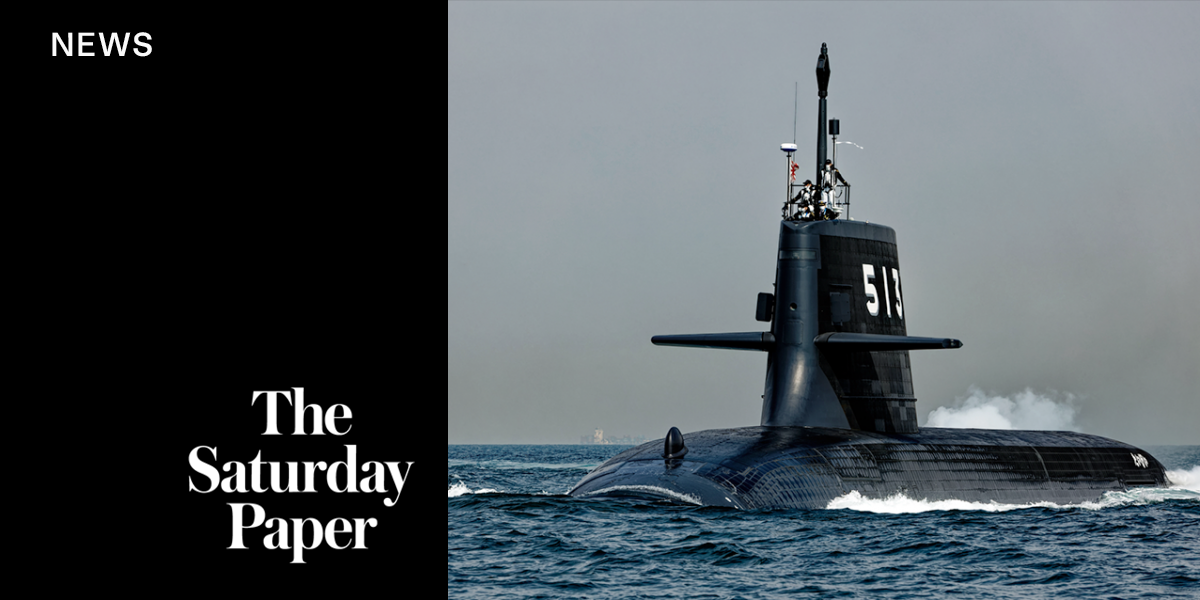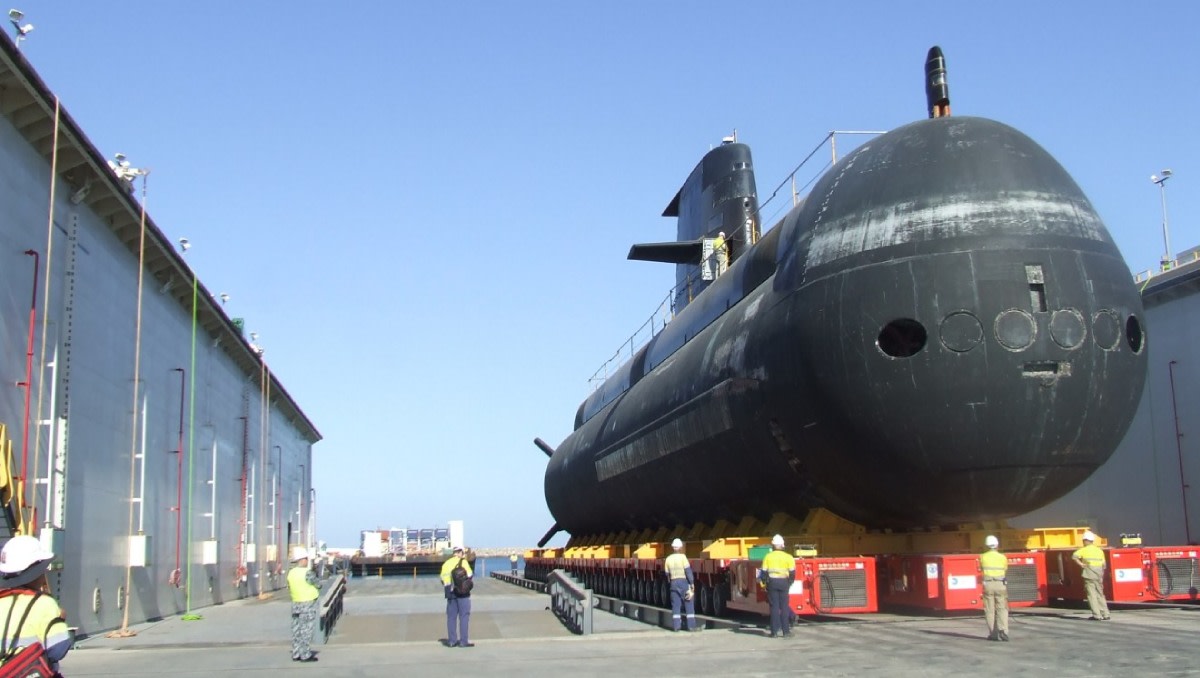I was in two minds whether to post this article as it may upset some, but I decided that in the spirit of open debate, all opinions should be listened to. Fair warning to GTX, it does refer to points of view previously expressed by Australian Sen. Rex Patrick.
As experts question the diplomatic, strategic and economic rationale behind Australia’s purchase of nuclear-powered submarines, the gaps in the country’s defensive fleet could be filled by conventional subs.

www.thesaturdaypaper.com.au
Well let's take a look.
In 1992, an Australian Oberon-class submarine entered the crowded waters of Shanghai’s port and became entangled in fishing nets. It had to surface for crew members to cut it free with axes. Chinese Navy sailors witnessed this, but nevertheless the submarine escaped. Had it not, the crew would’ve been imprisoned and Australia widely condemned and potentially convicted for an outrageous breach of international law.
This is an unsourced account of an operation the RAN hasn't declassified so it's hard to judge, but the idea that PLAN got eyes on an
Oberon on the surface in close proximity to Shangahi and just kept that to themselves is a bit suspect. Other versions I've seen of this incident say the boat never surfaced and are less incendiary in general about it. Also "outrageous breach of international law" doesn't exactly set a great tone for what's to come.
Almost a decade earlier, the Australian Navy had seriously considered scrapping submarines, according to former senior Australian Defence official Mike Gilligan. A study in 1985 had concluded they offered “little marginal benefit to Australia’s defences yet inflict a large marginal cost”. The cost could’ve been much higher given the tremendous risks the government allowed the navy to take, snooping in Chinese and Russian waters on behalf of the Americans, who wouldn’t put their nuclear submarines in danger.
Yes, the US is well known for not putting their boats in danger. Those cables totes tapped themselves, comrades. Hard to believe that America was such a terrible ally as to ask a close ally to assist them with a mission said ally had the skills and capability to perform.
Also, Dr Gilligan (why was his honorific omitted?) has been insisting since AUKUS was announced that the whole arrangement is a set up for the United States to "provoke" the innocent PRC into an attack on Taiwan and then respond by nuking mainland China. Seems like something this article might mention in passing when discussing AUKUS.
In Washington last month, Defence Minister Richard Marles said Australia, the United States and Britain were moving from “interoperability to interchangeability in defence hardware”. This would effectively mean Australia could not buy high-quality defence equipment from other countries if there was a higher-cost American or British version available.
Ah, this old saw. Notice how there's no definitions here, so "high-quality defence equipment" and "higher-cost American or British version" can mean whatever he wants them to mean. It's also utterly dismissive of the extent to which the US, British, and Australian defense industries are connected/intertwined, I would be fascinated about how he describes Wedgetail.
It’s obvious the real policy is to subsidise the US Navy’s submarine budget. Some will be located in Australia, with Australian flags and personnel, but they’re essentially US boats operated in the US’s great power interests. We’re paying for them to set up part of their current and future fleet in Australia.”
I know there's a school of thought that the US has no allies, only vassals and I don't really want to do 1000 words on that. The "subsidize" line is a bit silly, though.
Australia has a short and patchy record on submarine purchases. The government acquired many major weapons during World War II. None were submarines. That capability had to wait until the first of a total of six Oberon-class submarines was commissioned in 1967 from a Scottish shipyard. They operated satisfactorily but weren’t considered the nation’s most important military assets.
"The United States has a short and patchy record on Aircraft Carrier purchases. The government acquired many major weapons during the Great War. None were Aircraft Carriers. That capability had to wait until the
Langley and shortly thereafter
Lexington class conversions of the early 20s. They operated satisfactorily but weren't considered the nation's most important military assets." - This guy in 1936
After Kim Beazley became Defence minister in the Hawke government, he gambled on the value of submarines by ordering six large, battery-powered versions to be built in Adelaide. No other country has bought this type. The first was commissioned in 1966 and the last in 2003. Called the Collins class, it was based on a good Swedish design. But Beazley greatly increased its size and complexity, partly by adding American equipment that proved completely useless.
Skipping over the typo (who needs an Editor anyway?), love the implication that some random useless "American" crap was just slapped into them for no reason. Good Stuff.
Maintenance problems drove annual sustainment costs to $670 million. Often only two or three were available at a time, although availability later improved. And none attended the 2010 Rim of the Pacific event – known as Rimpac, the world’s largest international maritime warfare exercise, held biennially near Hawaii.
They missed a RIMPAC? Damn ye! Let Neptune strike ye dead, Beazley! HAAARK!
Former prime minister Scott Morrison and his successor, Anthony Albanese, have taken a much bigger gamble than Beazley did, with their commitment to buy at least eight nuclear attack submarines – almost certainly the American Virginia class. One of the US’s most highly regarded defence analysts, Winslow Wheeler,
HA
recently pointed out the Virginia-class subs have been available only 15 times in 33 years for their six-monthly deployments. This suggests fewer than two of Australia’s eight nuclear submarines would be operationally available, on average, each year.
Winslow's citing an article he didn't write about a speech he didn't attend, and as his style it lacks detail. Before they deploy and especially after yard time US Subs train, shockingly enough, and conduct sea trials to ensure they're in condition
to deploy. Would love to hear how often he thinks other navies' SSNs pull 6-month deployments.
Former submariner, naval consultant and South Australian senator Rex Patrick says, “Australia could buy 20 high-quality, off-the-shelf, modern submarines for $30 billion.”
You could just about buy 20 type 212 CD from TKMS for $30 billion AUD, if you buy them off the German production line, don't spec anything different, and leave out a lot of lifecycle costs which Australia prefers to price into its contracts. Delivery would start in the late 30s.
Patrick also makes the point that nuclear submarines are often “defeated” in exercises by ultra-quiet conventional submarines.
This has no detail at all so I'm just amused by the use of "Often."
Major new developments are making conventional submarines even more formidable than the nuclear versions. More powerful sensors mean submarines can be detected by the noise they make and by their passage through the Earth’s magnetic field. In addition, nuclear submarines can be detected by the wake they leave at high speeds, as well as the hot water they release from cooling their nuclear reactors, operating loud steam engines and other equipment. In future, submarines may also be detected by blue-green lasers that make the ocean more transparent.
Who knew sonar and MAD didn't exist until just now. Who knew a 2,000t SSK can carry the same sonar and thus detect as well as an 8000t SSN. Who knew non-nuclear subs leave no wake and are invisible to lasers nobody's invented yet. Who knew William Wallace can destroy the Anglish with lightning from his eyes and fireballs from his arse.
Most conventionally powered submarines – except Australia’s – use what is called air independent propulsion (AIP), which allows them to remain silent for four to six weeks before snorkelling. That often entails using a hydrogen fuel cell to propel the submarine, but it takes up significant space on the vessel.
In a major change, Japan’s new Taigei-class submarines don’t need AIP because they’re equipped with particularly efficient lithium-nickel-cobalt-aluminium oxide batteries, rather than the lead-acid batteries that the Australian Navy prefers, due in part to the risks of lithium-ion batteries catching fire. Other navies are increasingly confident the new types of battery will prove safe. Hans Ohff, a submarine specialist and visiting fellow at Adelaide University, told The Saturday Paper, “Generally speaking, lithium-ion batteries have a 1.5-times range advantage over lead-acid at lower speeds and an incredible four-times range advantage at high speeds.”
Yes, when you frame the discussion only in terms meant to make SSK/Ps look good, the discussion looks good for SSK/Ps. But how about this: whether battery or fuel cell powered, the economical submerge cruising speed of such boats generously sits in the 8-9 knot range. So just getting from Perth to a patrol area north of Australia will take a couple weeks, as will the return. And any running done at high speed underwater during the deployment will take a big chunk out of that submerged endurance. So, if the intention is to patrol anywhere beyond Australia's Contiguous zone, transit distances and times seem like something an honest discussion about the merits of SSK/Ps should include.
Since the Collins class is due to start retiring in 2026, a replacement is urgently required to help fill the gap until the first nuclear submarine might arrive, near 2045, and the last in 2065. Senator Patrick says the time it takes to do this can be reduced by choosing one of the three available “off-the-shelf” submarines: Japan’s Taigei, which has passed numerous tests demonstrating the safety of its new batteries; Singapore’s Type 218SG, made by Germany’s thyssenkrupp Marine Systems; and the Spanish S-81. The latter two still use conventional lead-acid batteries, but Ohff says a French and German joint venture is under way to develop their own lithium-ion batteries.
These options have advantages and drawbacks. The new Taigei class – of which Japan is acquiring 22 – requires a costly crew of 70 per vessel. The Type 218SG’s German manufacturer is the biggest submarine exporter in the world, with an enviable reputation for low maintenance costs across its range. Extensive automation means it needs only 28 crew members, and the vessel has a longer range than the Taigei’s 12,500 kilometres. Spain’s S-81 has a crew of 32 but a less experienced manufacturer.
Taigei uses a licensed variant of a US combat system, I thought those were bad? S-80 (not 81) had to be saved by Electric Boat but we won't hold that against them, extended build time we might. 218SG is an interesting choice to cite from TKMS' catalog, given it's lineage from 216, and isn't in service yet....but it should be a quality little boat. However if the requirement is for a stopgap between Collins and an AUKUS SSN, going with a boat that isn't able to use existing RAN weapons seems unlikely.
Going to stop here as the last few paragraphs are a mishmash, though I will note I'm amused he features a paragraph from Dr Gilligan which states that all submarines are a waste when aircraft can defend Australia's home waters, but ends the article saying:
The only urgency for Australia is to forget about nuclear submarines and get some conventionally powered submarines to enhance deterrence.
So, even the author doesn't put much stock in the words he's put in his article. I'm not angry about reading it, but whomever paid for it probably should be.



